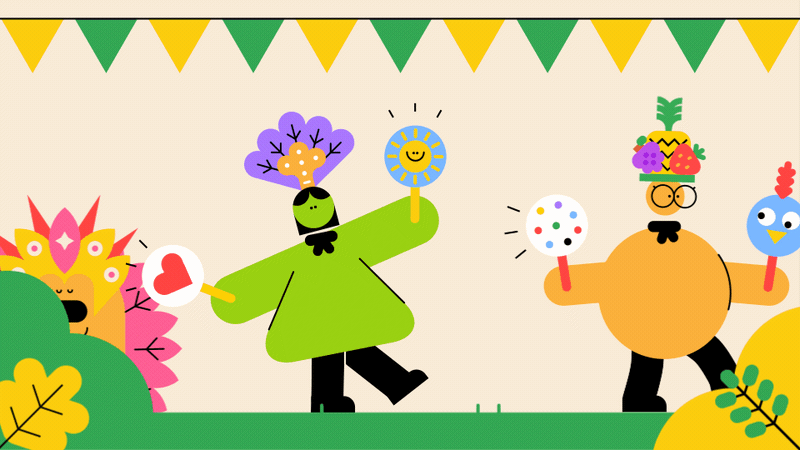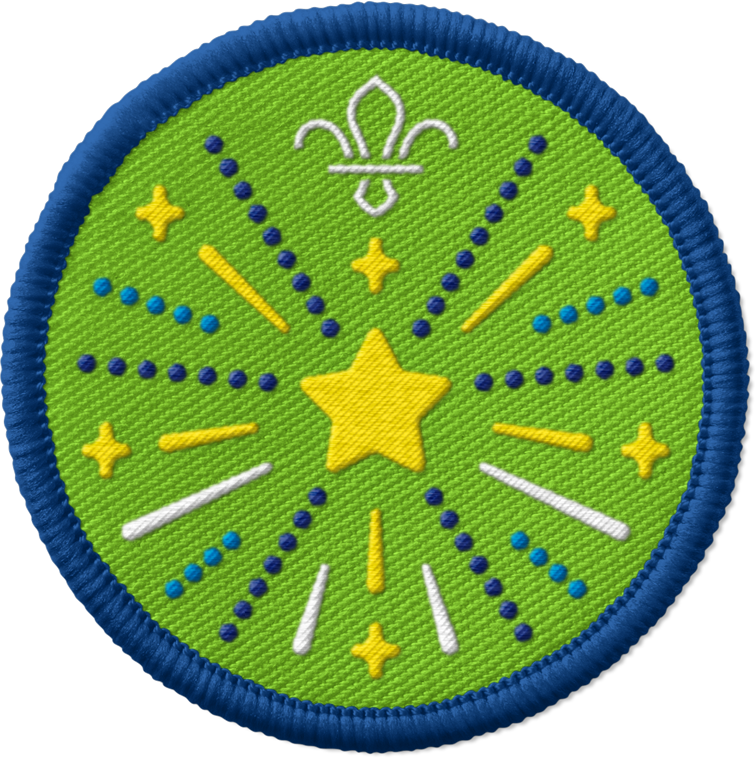
Make samba shakers
You’ll need
- Craft materials (for example, tissue paper, pipe cleaners, stickers)
- Dried food (for example, pasta, beans, rice)
- Sticky tape
- Glue sticks
- Device to play music
- Yoghurt pots (clean and empty, 2 per person)
- Samba music (optional)
Before you begin
- Use the safety checklist to help you plan and risk assess your activity. Additional help to carry out your risk assessment, including examples can be found here. Don’t forget to make sure all young people and adults involved in the activity know how to take part safely.
- Make sure you’ll have enough adult helpers. You may need some parents and carers to help if you’re short on helpers.
Planning this activity
- Put out some uncooked rice, some masking tape and two clean yoghurt pots per person, plus some things for decorating.
- You may wish to set up tables and chairs for people to sit at.
Learn about carnival
- Gather everyone together and explain that you’re going to celebrate Brazilian carnival.
- Ask if anyone knows anything about the carnival in Brazil.
- Explain that Brazil is the biggest country on the continent of South America. Brazil is nearly as big as the continent of Europe. Rio de Janeiro is a city in the country of Brazil. In Brazil, there is a festival called Carnival where people dance in colourful costumes and make music. The Carnival has been held every year since 1723 and lasts up to six days, with over two million people lining the streets to watch. Samba is the music that has a strong association to Carnival in Rio de Janeiro. Carnival is celebrated every year five days before Ash Wednesday. Ash Wednesday is the first day of Lent and it marks the first day when Christian people will make self-sacrifices or give things up until the beginning of Easter. At Carnival, local communities each have a float to decorate and are accompanied by their local samba school. The largest parade is held in a specially built ‘Sambadrome’ which can seat over 90,000 people.
Make your samba shakers
- To start, pour the rice into one yoghurt pot until it is half full. You may want to use a funnel or a spoon.
- Next, place the second yoghurt pot on top of the first rice-filled one. It should be upside down, so the widest part (or open sides) of the yoghurt pots are touching. This means the rice can move between the two pots. Make sure they’re lined up neatly!
- Use plenty of tape so the yoghurt pots stays closed and the rice stays inside when you shake it. An adult may want to check younger sections have used enough tape.
Now, it’s time to decorate. You may want to wrap the yoghurt pots in card, colour or paint them, add stickers, or glue and stick craft materials (such as tissue paper) onto them. Green and yellow are the colours of Brazil, but you can use lots of bright colours.
Celebrate Carnival
- Gather everyone together with their samba shakers. People in Brazil usually hold samba shakers with both hands between their fingers and thumbs, but people should hold it however is most comfortable for them.
- Everyone should make noise with their samba shaker.
- If you have access to a speaker and any samba music, you could play it. Make sure to follow music licensing requirements.
Reflection
This activity helped you to learn about Carnival. Did you already know anything about Brazil, or Carnival? Why does Brazil celebrate Carnival? What do you think it feels like to be a part of Carnival? Would you like to see the celebrations in Brazil?
This activity also reminded you that you’re a local, national, and international citizen. Do you celebrate any festivals? What celebrations similar to (or different from) the Carnival of Brazil? Do your celebrations involve music?
Safety
All activities must be safely managed. You must complete a thorough risk assessment and take appropriate steps to reduce risk. Use the safety checklist to help you plan and risk assess your activity. Always get approval for the activity, and have suitable supervision and an InTouch process.
- Scissors
Supervise young people appropriately when they’re using scissors. Store all sharp objects securely, out of the reach of young people.
- Food
Remember to check for allergies, eating problems, fasting or dietary requirements and adjust the recipe as needed. Make sure you’ve suitable areas for storing and preparing food and avoid cross contamination of different foods. Take a look at our guidance on food safety and hygiene.
If yoghurt pots are too fiddly for anyone, they could reuse a (clean) plastic bottle or juice carton and fill it with rice.
If you do include food or drinks as part of this activity, or use rice and clean yoghurt pots, remember to check for allergies, eating problems or dietary requirements and adjust the recipe or items used in the craft as needed.
Make sure you've checked everyone's dietary requirements and allergies then adapted the recipe as appropriate. This may include ensuring no cross-contamination during food storage, preparation and serving, too. Check if there are any items of food (or packaging) that people can’t touch or be near to or if there are items that people might not be comfortable using in the activity.
Be conscious about who may be fasting when providing snacks, eating and drinking – you may want to plan this activity for when everyone can get involved or leave out the eating and drinking part.
All Scout activities should be inclusive and accessible.
If you’re able to play a tune, everyone could repeat the rhythm with their samba shakers. This would count towards the first requirement of stage one of the Musician Staged Activity Badge.
Get your taste buds involved with some popular snacks from Brazil. Make some beiju (tapioca flour crepes) together, prepare some brigadeiros (traditional Brazilian sweets), pick up some castanha do Pará (brazil nuts), or, if you've got a local Brazilian shop, grab some goiabada (guava jam) to enjoy with cheese.




